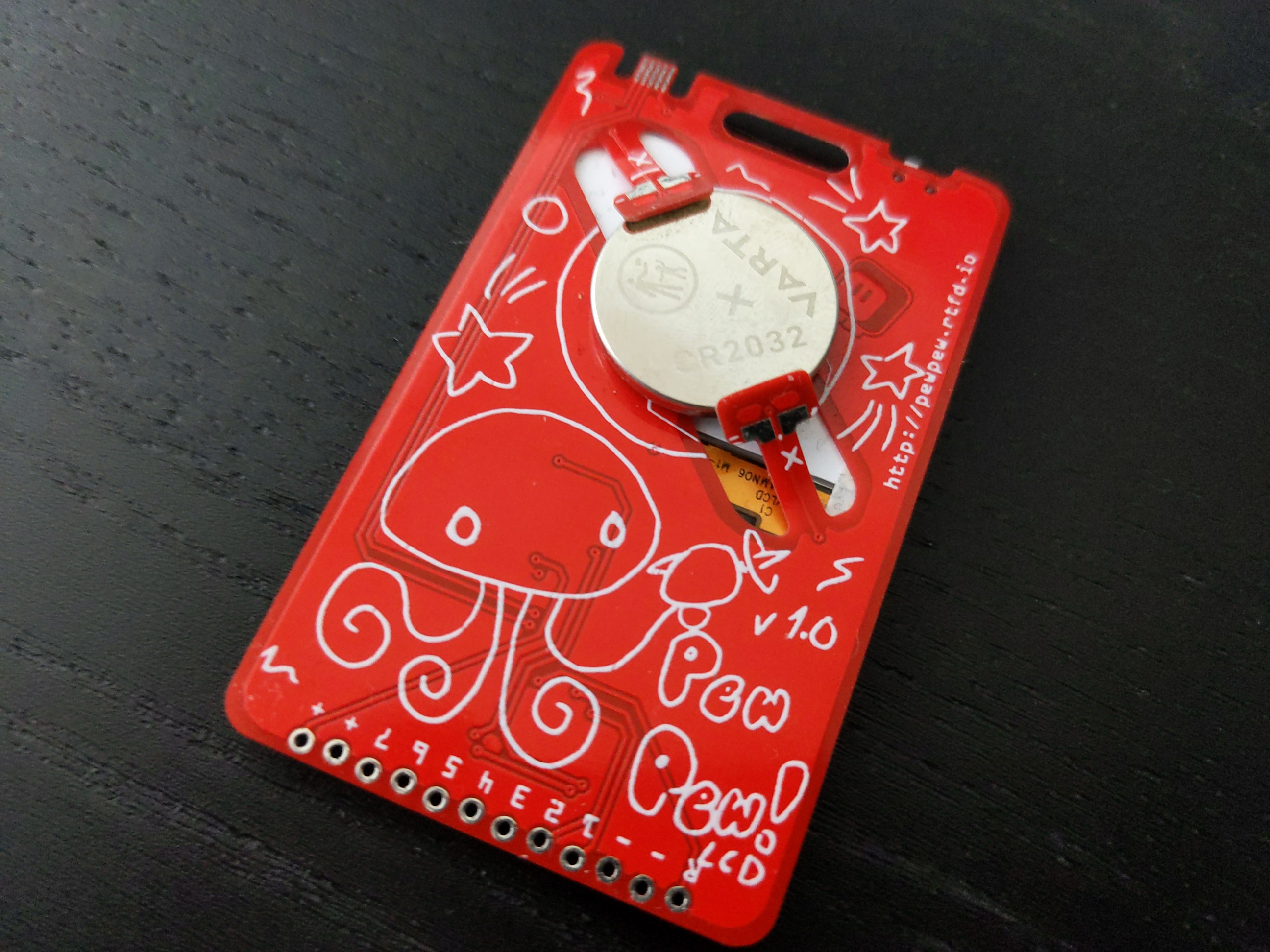On Batteries¶
Published on 2022-05-12 in PewPew LCD.
If we are talking about the environment, then let’s talk about the only consumable part of this device: the battery (by “consumable” I mean it needs to be replaced once in a while, please don’t eat batteries).
The very first PewPew FeatherWing used a lithium-polymer rechargeable battery, simply because all Feathers use such batteries. I didn’t think much about it back then, and I didn’t have a clear use case in mind at the time, I just went with what was the default on the platform.
Starting with PewPew Standalone, all devices use primary cell batteries — that is, non-rechargeable. Why? Surely rechargeable batteries must be much better for the environment, since you get to reuse them, and primary cells are just thrown away when they are spent? It’s not that simple, and you have to consider how the device is used.

PewPews are designed for workshops. That means that you are most likely going to receive your device on a workshop, use it intensively for a couple of hours, then take it home with you, maybe carry it around for a few days to show to your friends, and then put it in a drawer and forget about it for a couple of years. Hopefully, once in a while you will find it again, resurrect it and have some fun with it again, or give it away to the neighbor’s kid to play, at which points the whole story repeats. You might also incorporate it as a control panel in some bigger project, at which point it will be probably powered from that project.\
In any case, if you think about the power profile of such use, it’s exactly what kills rechargeable batteries. They are good for things you use all the time and keep charged, like smartphones or laptops (through they don’t like to be topped up all the time), and lying for years without a charge in a drawer is really bad for them — to the point where they can burst in fire when you try to charge them afterwards. So you would have to replace them anyways, but replacing such — usually somewhat non-standard — batteries is not as easy as buying a pack of batteries in a nearby kiosk.
With primary cells you don’t care — they will get you through the initial intensive use, and when you find the device in your drawer years later, you will just clean whatever spilled from them and replace them with standard cells that are cheap and widely available.
The second problem this solves is transportation. The workshops are likely to happen some distance from where the devices were first produced, and getting them there might involve shipping or flying. Both of those means of transportation have rules about lithium-polymer batteries, and if you want to take 20 of such batteries with you, there might be some problems with that. With primary cells this is not a problem — you ship them without the batteries (which also makes them lighter and the shipping costs lower), and buy the batteries when you get there. Easy. This way you are also reasonably sure the batteries are fresh and were stored properly.
And third problem is recycling. You might think that primary batteries are bad for the environment, because when they run out you throw them in the trash. However, where I live that is illegal, and I firmly believe it should be illegal everywhere (and we are getting there, with laws slowly changing to cover that). Primary cells — mostly alkaline and coin cell batteries — are collected and recycled. And they really are getting recycled, unlike the lithium-polymer batteries, which are only collected, since recycling them is not economically viable.
How come, you ask? Well, the alkaline and coin cell batteries have been around for a while, without much of a change to their construction or chemistry. Sure, the manufacturers are trying to improve the production process and raise the quality, but those designs are practically stable by now — there is very little changing, if at all. This means there was also time to develop efficient procedures for recycling the batteries, and recovering the valuable chemicals from them. The lithium-polymer batteries are not like that. There is a constant innovation in construction and chemistry of those batteries, and a battery you buy today is going to be considerably different from a battery you bought five years ago. They are also pretty complex inside, with all sorts of complex processes used to make the electrode surfaces bigger and the batteries more efficient — which also means the different parts of the battery are difficult to separate. You can’t just grind the whole thing into powder and soak it to remove the chemicals, like they do with alkaline batteries.
So in the end, in this particular use case, primary cells seem to be much friendlier for the environment and more practical.
 deshipu.art
deshipu.art